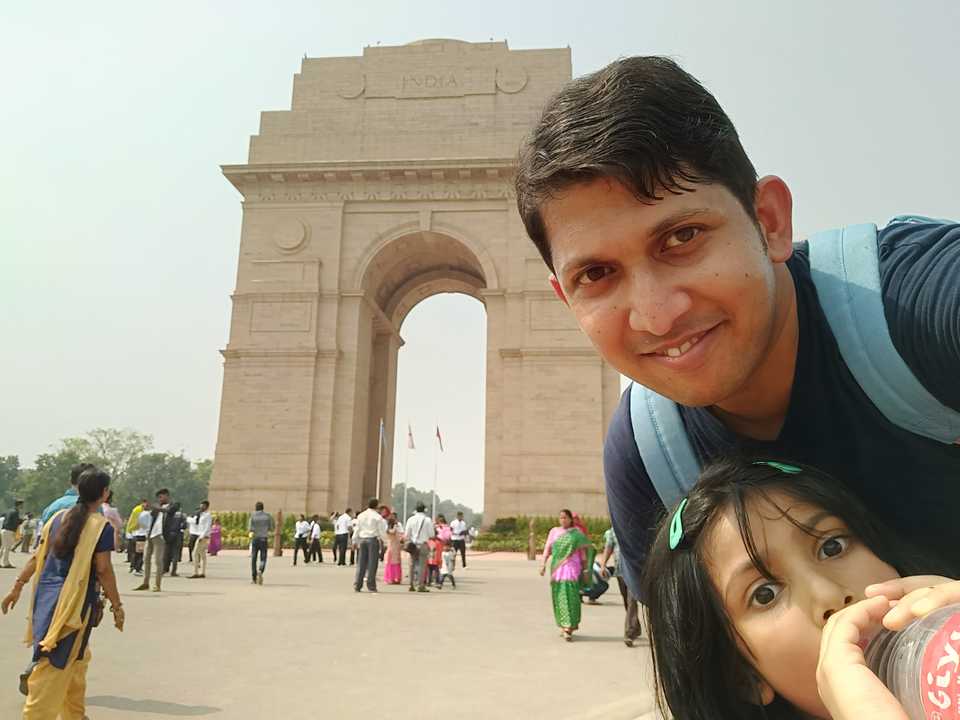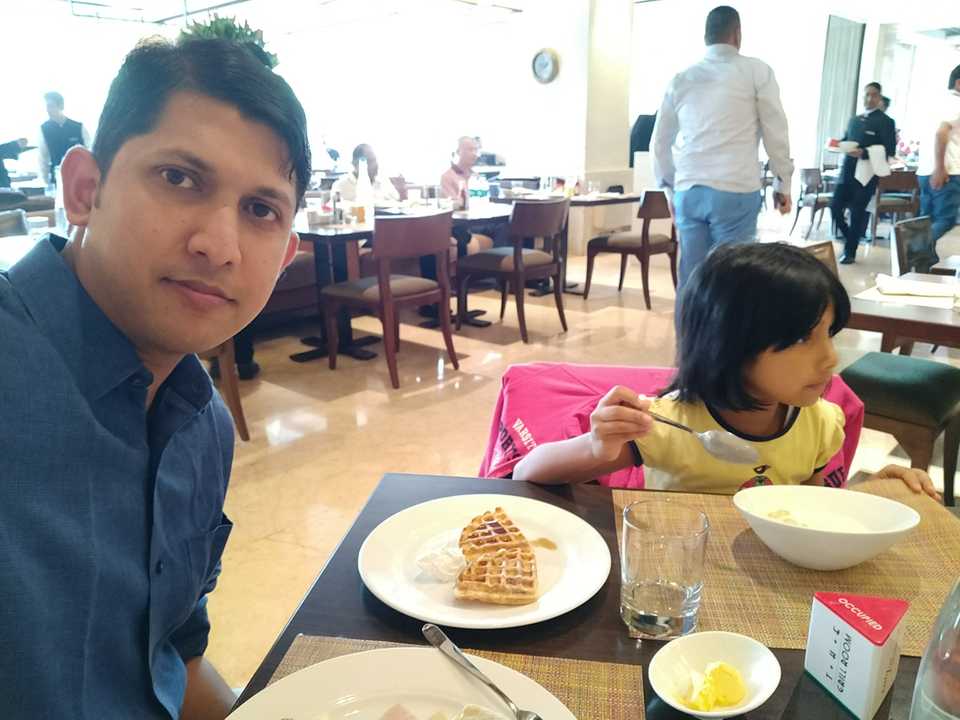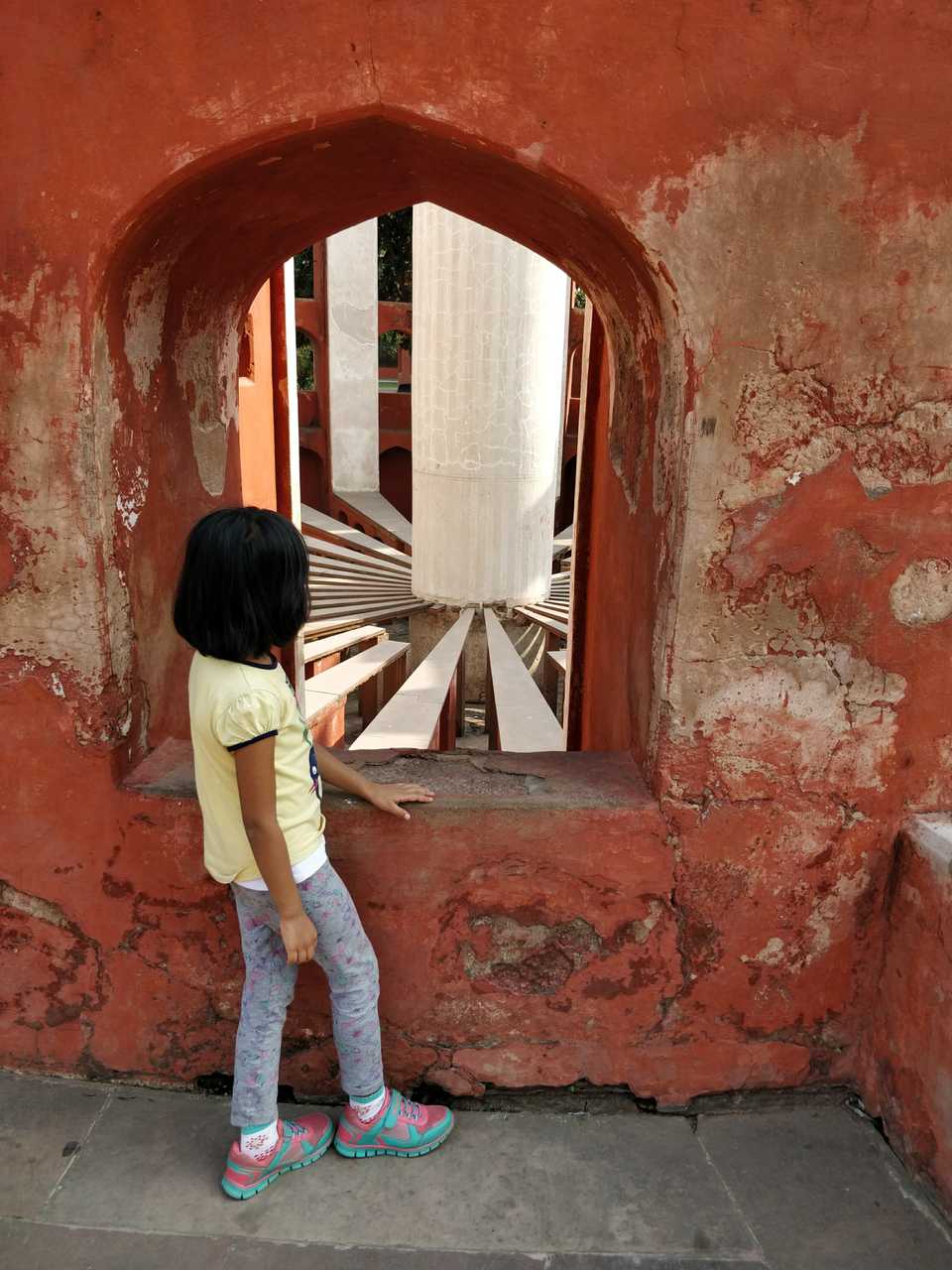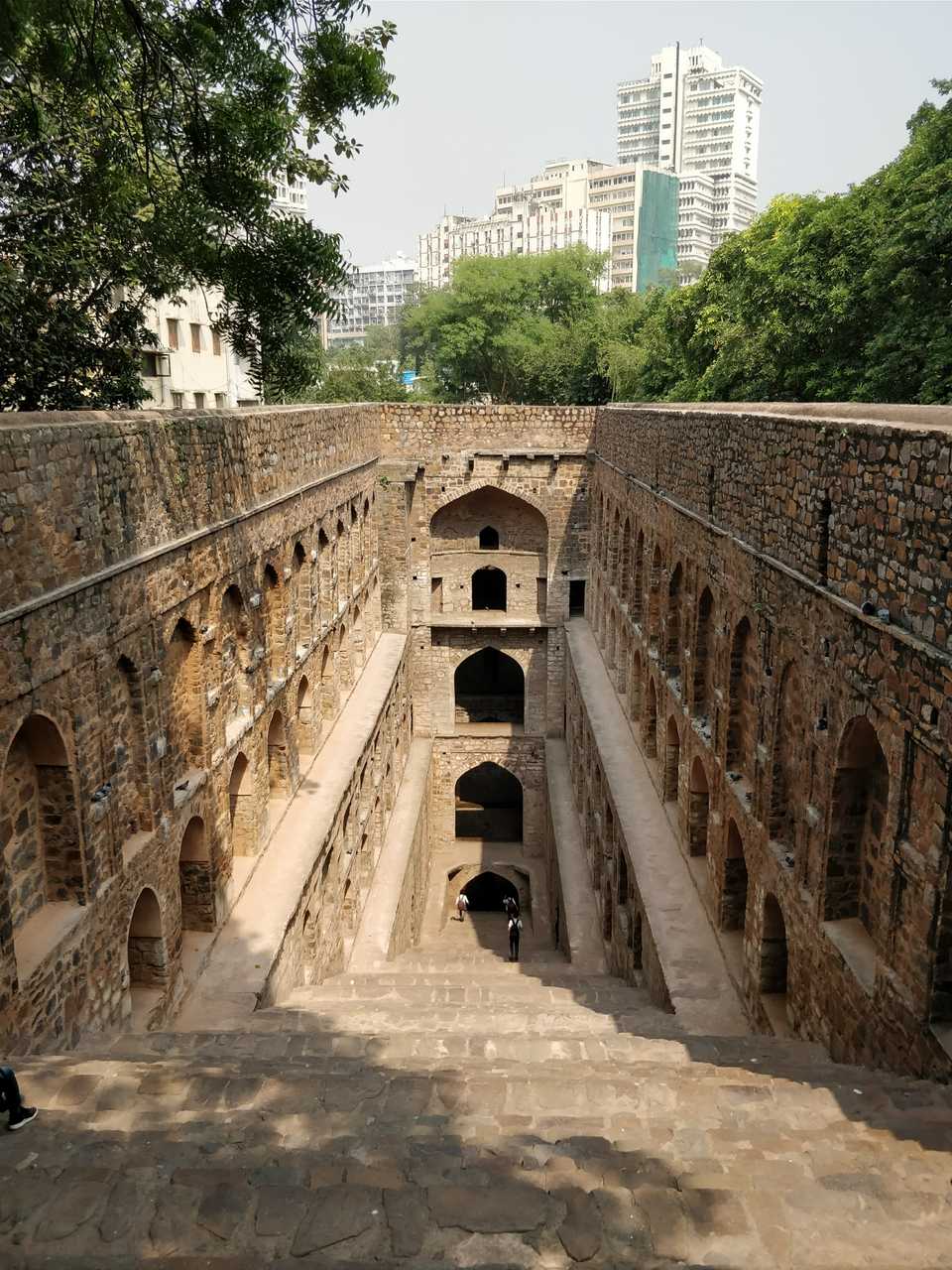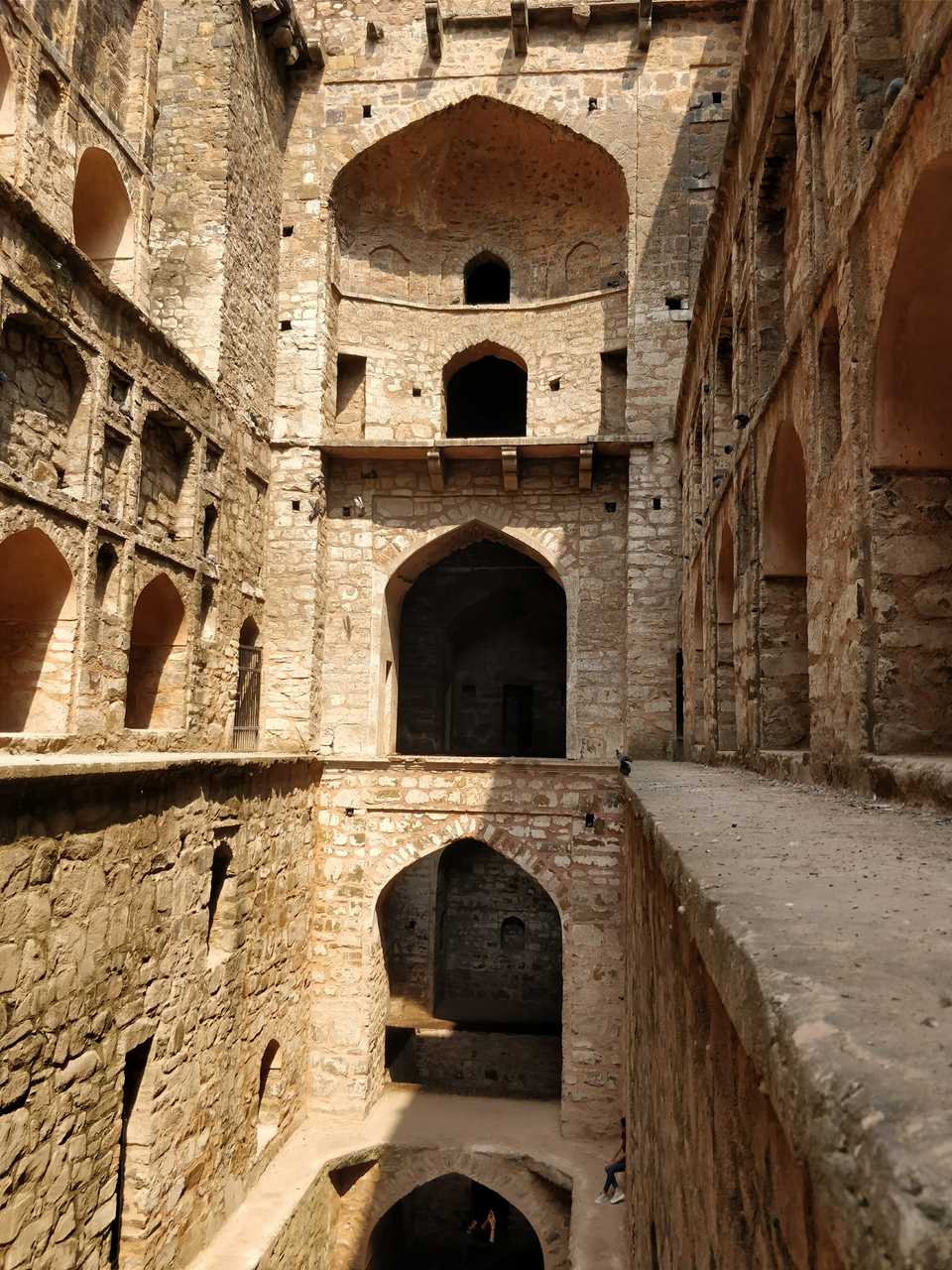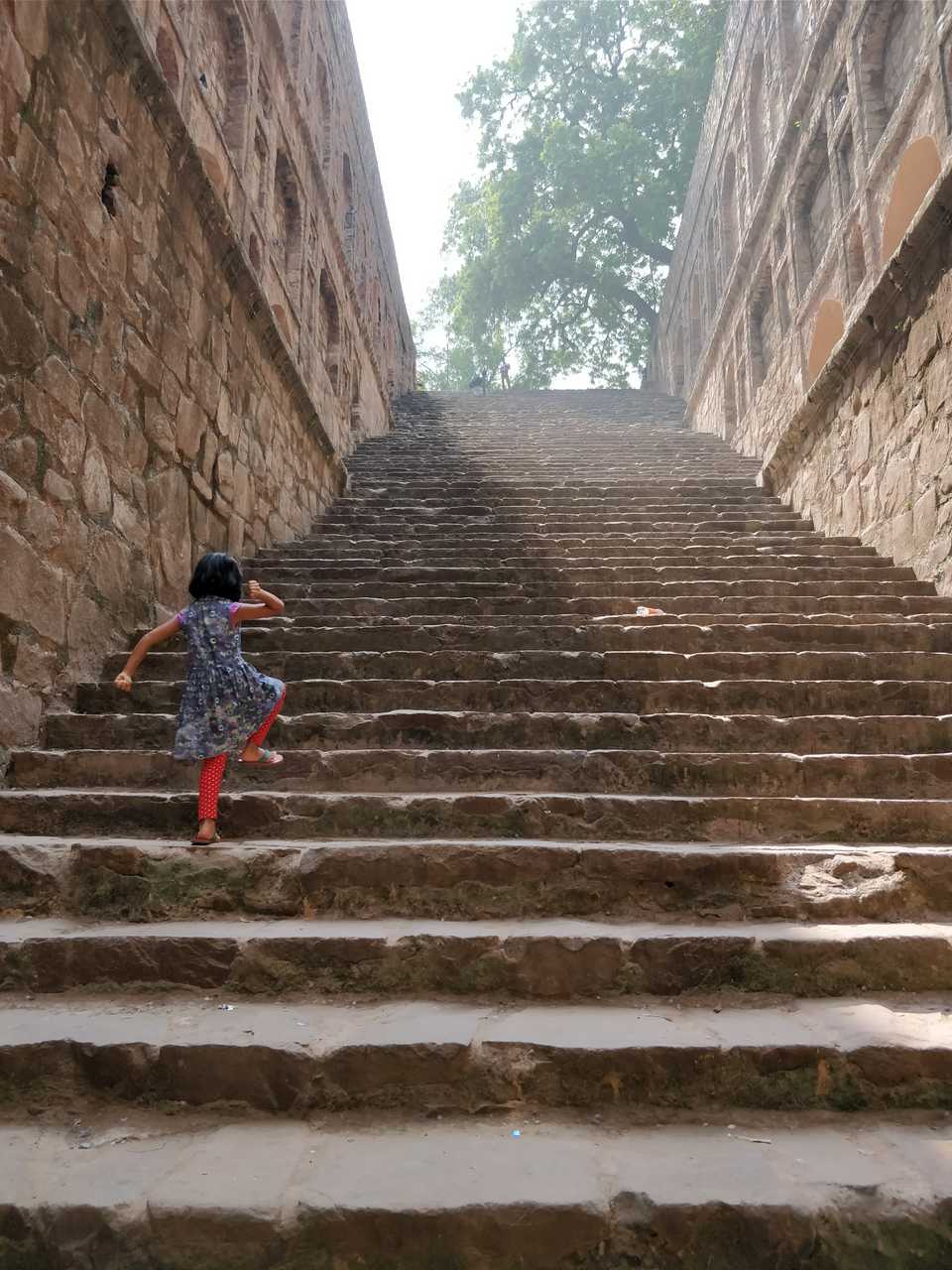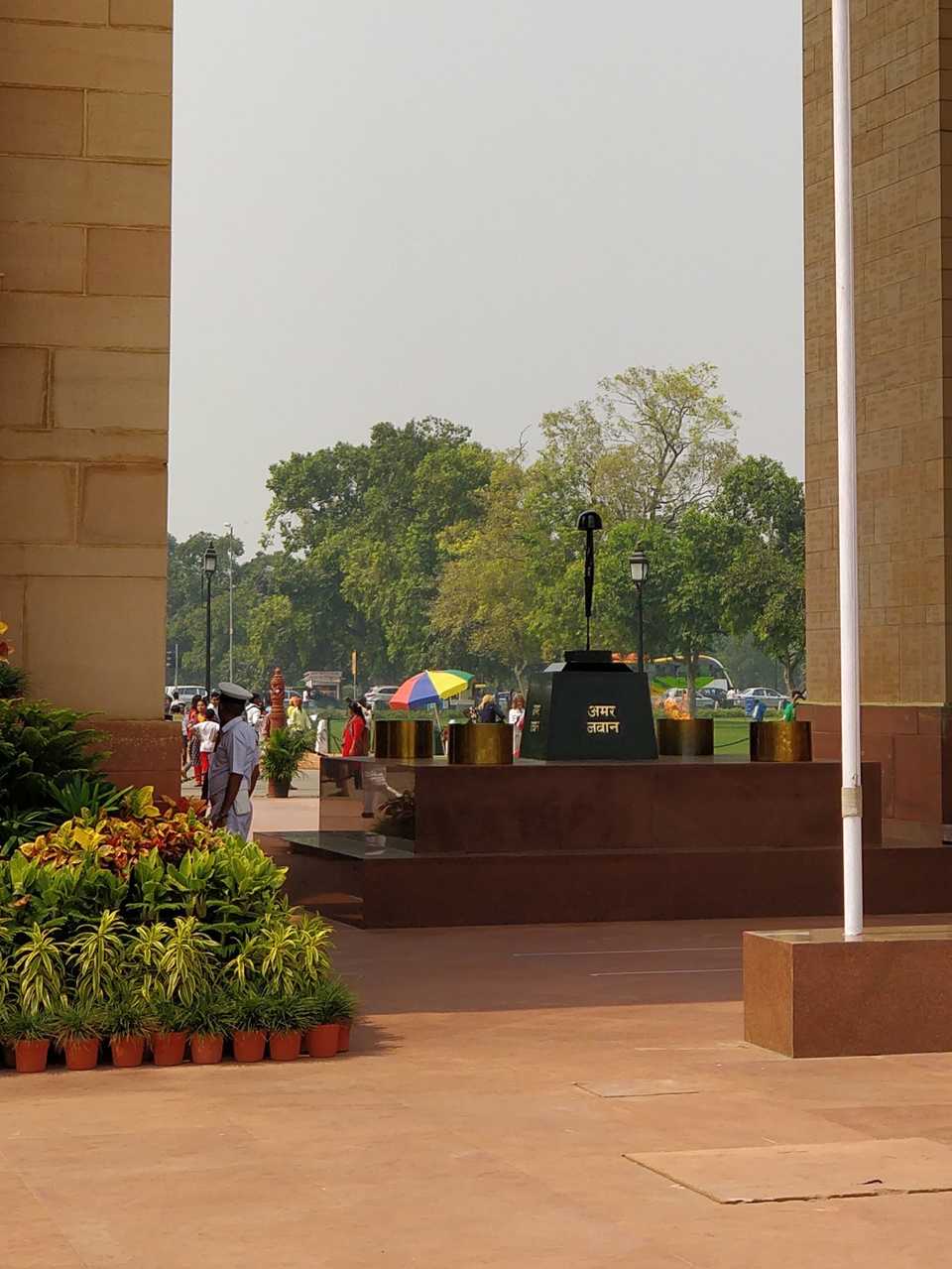It may be sad, but it’s true. Indian cities are not great for walking. This is despite a significant proportion of people getting around on foot — a number estimated to be as high as 22% in 2009, in cities larger than 8 million. Delhi is no exception. So, the notion of walking in Delhi did seem a bit odd to me, especially when there was no obligation to. Even in October when I was there, it is either too hot or too smoggy, not to mention the risk of theft. Besides, almost no one seems to encourage you to walk, bar a few exceptions. So it is something of an accomplishment that I managed to walk a not immodest 5 kms in Delhi over two days, that too with a six year old girl in tow. Not that I am averse to the idea of walking — quite the contrary, in fact. I have written earlier that “when you walk, the scenery and the soundscape change, and yet at a gentle enough pace that lets you take it all in” which makes walking the best way to get to know a place. So how did my love for walking overcome my reservations about walking in Delhi?
We were on a business cum pleasure trip in Delhi and I found myself with two days on hand and the delightful company of my six year old daughter, Laasya, while Avantika minded the business part of the trip. So I sat down to plan, the previous evening. Having learned from earlier trips that constant changes of scene don’t go down so well, I decided that we would pick one, or at most two places to see each day. Since we were staying in the Connaught Place area, there were plenty of options to choose from, many of which were within “walking distance” — admittedly, a notion with varied interpretations. So I thought we might be able to even walk the streets of Delhi in the process. As I sat considering which places to see, we received a sober note of caution — a colleague’s smartphone had just been snatched by a pair of pilferers on a motorcycle, no more than a few streets from our hotel!
The first day started off a bit too lazily. By the time we had bathed, had breakfast, dilly-dallied and finally dressed, it was quite late. Rather than pick a place of sight-seeing, I decided to seek the comfort of a neighbourhood mall. The homogeneity of shopping malls is both a bane and a boon, but this time we both felt reassured by the slightly re-arranged layout of familiar shops. Like a team of pros, we confidently found our way to the food court, ordered and ate lunch, and even took part in a colouring activity. But it felt like a mild cop out to me. Not to Laasya. “Let’s explore”, she said. So we walked around in the mall, bought some cotton candy for dessert, and walked some more. Then we came upon this imposing “mushroom cloud” sculpture made from household utensils. Upon closer enquiry, it turned out to be “The Line of Control”, India’s largest ever steel sculpture, by contemporary artist Subodh Gupta. Despite the tense title and looking like nuclear destruction in action, Gupta’s message is that of a “cloudburst of prosperity, peace and harmony”.
All the mall walking notwithstanding, we hadn’t done any street walking yet. We had taken a taxi here, and we tamely took another taxi to go and see Jantar Mantar. With a name that loosely translates to “measuring instrument”, Jantar Mantar is an observatory consisting of architectural structures built to measure the passage of time and the movement of planets. It is located in four sites at Delhi, Jaipur, Ujjain and Varanasi. It was constructed by the Maharaja Jai Singh II of Jaipur, in the 18th century. Laasya was quite excited to see all the interestingly shaped structures, thrilled to learn they were used for time-keeping and astronomy, and quickly bored upon any attempt at explaining how they worked. For that I blame my own incomplete understanding and hand waving explanations. After a leisurely time at Jantar Mantar, spent walking the lawns, checking out the larger than life astronomy instruments, sipping water, eating nuts and spotting squirrels, we decided it was time to go.
It was about 2 kms to our hotel, and I decided we should walk. With constant encouragement and flattery about our walking stamina, we quickly put 1 km under our belt. It was an early evening in October and still quite hot. But the air was not terrible by the standards of urban India that I have experienced in Mumbai or Bengaluru. There were plenty of people about, of different means and grooming. There were decent sidewalks and the shade of trees from time to time. And then there was the smell — a kind of dry, hot smell, enhanced by one or two sellers of roasted peanuts. Each city has its sensory identity, right down to how it smells — Mumbai with its musty, warm sea air, Bengaluru with its colder, leafy, polleny smell, and now Delhi, hot and dry. Anyway at 1 km, we sought refuge in a coffee shop and shared a beverage with lots of crushed ice in it, before crushing the last kilometer.
Encouraged by this experience, we decided to do some more walking the next day. Just over 1 km away from where we were staying was the ancient step well called Agrasen Ki Baoli (translated as “the well of Agrasen”). Constructed by the Agrawal community in the 14th century, in the honour of King Agrasen, their founding father, the step well is an awe-inspiring structure. It consists of three levels and 108 steps that go down all the way to its bottom. Although it doesn’t hold any water today, it is hard not to appreciate its sheer capacity and the many people in the neighbourhood it would have served when it was in use. Originally designed to cope with seasonal fluctuations in the supply of water, this and other step wells in India are a significant part of India’s architectural heritage.
After the stair climb and several swigs of water, we decided there could be nothing better than to walk another 2 kms to India Gate. We were already quite sweaty and thirsty, and we had nearly depleted our water. But the walk along the wide and tree lined Kasturba Gandhi Marg was quite pleasant. There was a steady stream of vehicular traffic, but hardly any walkers. But we kept taking pitstops every few hundred metres for a small sip of water. Then we heard the ice cream seller’s bell. We completed the rest of the walk, licking on rapidly melting ice candies while also shooing away some pesky flies. At the India Gate lawns, after a few pieces of apple and cucumber, we were finally ready to see some sights. We walked around the lawns and admired the spectacle of the imposing India Gate which, of course, needs no introduction. A war memorial dedicated to the 82,000 Indian soldiers who died in World War I, it was constructed in the 1920s. In 1971, another structure called the Amar Jawan Jyoti (flame of the immortal soldier) was installed under the arch. The Amar Jawan Jyoti is a rifle standing upright, with its barrel into the ground, capped by a war helmet and represents India’s tomb of the unknown soldier.
As we got into a more comfort-oriented mode of transport back to our hotel, I sat thinking that explaining grown-up matters such as war memorials to six year olds is not easy. Step wells, sun dials or steel sculptures are only somewhat easier. But there is no doubt that walking is the best way to see any place. Despite the heat, it was much easier than I had feared, and we had a great time. So you know, when you are in town — my town, your town or any other town — take a walk to the places you want to see. Walk on, ’cause that’s really the best way to roll!
